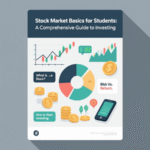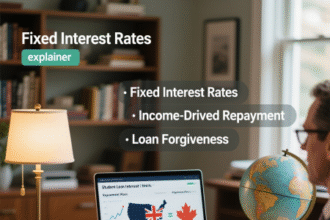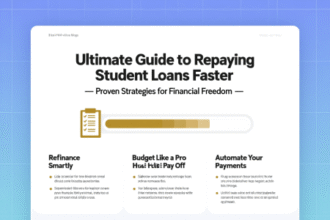We often hear that saving money is a cornerstone of financial success, but the real magic happens when compound interest enters the equation. Unlike simple interest, which calculates earnings solely on the initial principal, compound interest allows your wealth to grow exponentially by earning interest on both the principal and the accumulated interest over time. This phenomenon transforms modest savings into substantial wealth, making it a critical concept for anyone aiming to achieve financial independence.
- Why Compound Interest Matters for Wealth Building
- Key Factors That Maximize Compound Interest
- 1. Principal Amount: Start with What You Have
- 2. Interest Rate: Seek Higher Returns
- 3. Compounding Frequency: More Is Better
- 4. Time Horizon: The Greatest Ally
- Practical Strategies to Leverage Compound Interest
- Investment Vehicles That Benefit from Compound Interest
- 1. Savings Accounts and Certificates of Deposit (CDs)
- 2. Stock Market Investments
- 3. Retirement Accounts
- 4. Bonds
- 5. Real Estate Investment Trusts (REITs)
- The Role of Discipline in Harnessing Compound Interest
- Real-Life Examples of Compound Interest in Action
- Common Mistakes to Avoid with Compound Interest
- Tax Implications of Compound Interest
- The Psychological Benefits of Compound Interest
- Historical Context of Compound Interest
- Comparing Compound Interest to Other Wealth-Building Strategies
- Advanced Techniques for Maximizing Compound Interest
- The Role of Inflation in Compound Interest
- Building a Compound Interest Plan for Different Life Stages
- The Global Perspective on Compound Interest
- Technology and Compound Interest
- The Future of Compound Interest
- Recommendations for Maximizing Compound Interest
- FAQs About Compound Interest
Imagine depositing $10,000 in an account with a 5% annual interest rate, compounded annually. After one year, you earn $500 in interest, bringing your balance to $10,500. In the second year, you earn 5% on $10,500, which amounts to $525, increasing your balance to $11,025. This cycle continues, with each year’s interest calculation based on a larger principal, accelerating your wealth accumulation. Over decades, this growth becomes staggering, showcasing why compound interest is often described as the “eighth wonder of the world.”
The formula for compound interest is A = P(1 + r/n)^(nt), where:
-
A is the future value of the investment.
-
P is the principal (initial investment).
-
r is the annual interest rate (as a decimal).
-
n is the number of times interest is compounded per year.
-
t is the number of years.
This formula underscores the exponential nature of compound interest, where small changes in the interest rate, compounding frequency, or time horizon can lead to dramatic differences in outcomes. For instance, increasing the compounding frequency from annually to monthly can significantly boost returns, as interest is calculated on a more frequent basis.
Why Compound Interest Matters for Wealth Building
Wealth building is not about earning a high income alone; it’s about making your money work harder for you. Compound interest is a passive yet powerful tool that amplifies your savings without requiring additional effort. Whether you’re saving for retirement, a home, or your children’s education, understanding and leveraging compound interest can make these goals attainable.
Consider two individuals: one starts saving at age 25, while the other begins at 35. The person who starts at 25 invests $5,000 annually at an 8% annual return, compounded monthly. By age 65, their investment grows to approximately $1.49 million. The person who starts at 35, investing the same amount at the same rate, ends up with about $566,000 by age 65. The 10-year head start results in a difference of nearly $1 million, illustrating the profound impact of time on compound interest.
This example highlights a critical principle: the earlier you start, the more time compound interest has to work its magic. However, even if you’re starting later, the benefits of compounding can still significantly enhance your financial future. The key is to begin now, regardless of your age or financial situation.
Key Factors That Maximize Compound Interest
To fully harness the power of compound interest, we must consider several factors that influence its effectiveness. These include the principal amount, interest rate, compounding frequency, and time horizon. Let’s explore each in detail:
1. Principal Amount: Start with What You Have
The initial amount you invest, or the principal, sets the foundation for compound interest. While larger principals yield greater returns, even small amounts can grow significantly over time. For example, investing $100 monthly at a 7% annual return, compounded monthly, can grow to over $80,000 in 30 years. The key is consistency—regular contributions, no matter how small, can accumulate into substantial wealth.
2. Interest Rate: Seek Higher Returns
The interest rate directly affects how quickly your money grows. Higher rates accelerate compound interest, but they often come with increased risk. For instance, savings accounts typically offer low rates (0.5%–2%), while stock market investments, like index funds, historically average 7%–10% annually. Balancing risk and reward is crucial when selecting investments to maximize compound interest.
3. Compounding Frequency: More Is Better
The frequency of compounding—whether daily, monthly, quarterly, or annually—impacts your returns. More frequent compounding results in faster growth because interest is calculated on a larger balance more often. For example, $10,000 invested at 5% compounded annually grows to $16,288.95 in 10 years. If compounded monthly, it grows to $16,453.09—a small but meaningful difference.
4. Time Horizon: The Greatest Ally
Time is the most powerful factor in compound interest. The longer your money is invested, the more opportunities it has to grow exponentially. This is why starting early is critical. Even modest investments made in your 20s can outpace larger investments made later in life due to the extended time horizon.
Practical Strategies to Leverage Compound Interest
To make compound interest work for you, we recommend adopting practical strategies that align with your financial goals. Here are actionable steps to maximize its benefits:
-
Start Early and Be Consistent: Begin investing as soon as possible, even if it’s a small amount. Set up automatic contributions to ensure regular investments.
-
Choose High-Yield Investments: Explore options like index funds, mutual funds, or dividend-paying stocks that offer higher returns than traditional savings accounts.
-
Reinvest Earnings: Allow interest, dividends, and capital gains to reinvest, compounding your returns over time.
-
Minimize Fees: High fees can erode your returns. Opt for low-cost investment vehicles like index funds or ETFs.
-
Stay Disciplined: Avoid withdrawing funds prematurely, as this disrupts the compounding process.
Investment Vehicles That Benefit from Compound Interest
Not all investment options are equal when it comes to compound interest. We’ve outlined some of the most effective vehicles to consider:
1. Savings Accounts and Certificates of Deposit (CDs)
High-yield savings accounts and CDs offer guaranteed returns with low risk. While interest rates are typically modest (1%–3%), they provide a safe way to start leveraging compound interest. Online banks often offer higher rates than traditional banks, making them a better choice for savers.
2. Stock Market Investments
Investing in stocks, particularly through index funds or ETFs, provides access to higher historical returns (7%–10% annually). These investments are ideal for long-term growth, as compound interest works on both capital gains and reinvested dividends.
3. Retirement Accounts
Retirement accounts like 401(k)s and IRAs are designed to maximize compound interest. Contributions grow tax-deferred or tax-free, allowing your money to compound without the drag of taxes. Employer-matched 401(k) contributions can further amplify your returns.
4. Bonds
Bonds, particularly those with reinvested interest payments, benefit from compound interest. Treasury bonds or corporate bonds can provide steady returns with moderate risk, depending on the issuer.
5. Real Estate Investment Trusts (REITs)
REITs allow you to invest in real estate without owning property directly. Dividends from REITs can be reinvested, leveraging compound interest to grow your wealth over time.
The Role of Discipline in Harnessing Compound Interest
While compound interest is a powerful tool, it requires discipline to realize its full potential. We often face temptations to spend rather than save, or to chase high-risk investments promising quick returns. Staying committed to a long-term strategy is essential. Here’s how to maintain discipline:
-
Set Clear Goals: Define specific financial objectives, such as saving for a home or retirement, to stay motivated.
-
Automate Investments: Use automatic transfers to investment accounts to eliminate the temptation to skip contributions.
-
Monitor Progress: Regularly review your investment performance to stay engaged and make adjustments as needed.
-
Avoid Lifestyle Inflation: As your income grows, resist the urge to increase spending. Instead, funnel extra funds into investments.
Real-Life Examples of Compound Interest in Action
To illustrate the transformative power of compound interest, let’s explore a few real-life scenarios:
Scenario 1: The Early Investor
Sarah, a 25-year-old professional, invests $200 monthly in an index fund with an 8% annual return, compounded monthly. By age 65, her total contributions of $96,000 grow to approximately $607,000, thanks to compound interest. Her disciplined approach and early start yield a retirement nest egg that far exceeds her contributions.
Scenario 2: The Late Starter
John, a 40-year-old, begins investing $500 monthly at the same 8% return. By age 65, his $150,000 in contributions grows to about $366,000. While impressive, his returns are significantly lower than Sarah’s due to the shorter time horizon, underscoring the importance of starting early.
Scenario 3: The One-Time Investor
Emma, a 30-year-old, inherits $50,000 and invests it in a diversified portfolio yielding 7% annually, compounded monthly. She makes no additional contributions. By age 65, her investment grows to approximately $262,000, demonstrating that even a single lump-sum investment can benefit immensely from compound interest.
Common Mistakes to Avoid with Compound Interest
While compound interest is a powerful wealth-building tool, certain pitfalls can hinder its effectiveness. Here are mistakes to avoid:
-
Delaying Investment: Waiting to start investing reduces the time available for compounding, significantly impacting returns.
-
Withdrawing Funds Early: Cashing out investments interrupts the compounding process, diminishing long-term growth.
-
Ignoring Fees: High management fees or transaction costs can erode your returns, reducing the benefits of compound interest.
-
Chasing High-Risk Investments: While high returns are attractive, excessive risk can lead to losses that negate compounding benefits.
-
Neglecting Diversification: Over-concentration in a single asset class increases risk. Diversify to ensure steady, long-term growth.
Tax Implications of Compound Interest
Taxes can impact the growth of your investments, so it’s essential to understand their role. Interest earned in taxable accounts, such as savings accounts or brokerage accounts, is subject to income tax, which can reduce your effective returns. To mitigate this, consider tax-advantaged accounts:
-
Roth IRAs: Contributions are made with after-tax dollars, but qualified withdrawals, including interest, are tax-free.
-
Traditional IRAs and 401(k)s: Contributions are tax-deductible, and earnings grow tax-deferred until withdrawal.
-
529 Plans: These accounts offer tax-free growth for qualified education expenses, leveraging compound interest effectively.
Consulting a tax professional can help you optimize your investment strategy to minimize tax liabilities and maximize compound interest.
The Psychological Benefits of Compound Interest
Beyond financial gains, compound interest offers psychological benefits. Watching your savings grow steadily can boost confidence in your financial future, reducing stress and fostering a sense of control. This positive reinforcement encourages continued saving and investing, creating a virtuous cycle of wealth accumulation.
Moreover, understanding compound interest empowers you to make informed financial decisions. It shifts your mindset from short-term spending to long-term wealth creation, aligning your actions with your financial goals.
Historical Context of Compound Interest
The concept of compound interest has been recognized for centuries. Ancient civilizations, such as the Babylonians, used early forms of interest calculations in trade and lending. In the modern era, mathematicians like Jacob Bernoulli formalized the concept in the 17th century, paving the way for its widespread application in finance.
Albert Einstein is often credited with calling compound interest the “eighth wonder of the world,” though the attribution is debated. Regardless, the phrase captures the awe-inspiring potential of compounding, which has enabled countless individuals to achieve financial independence.
Comparing Compound Interest to Other Wealth-Building Strategies
While compound interest is a cornerstone of wealth building, it’s worth comparing it to other strategies:
-
Real Estate: Property investments can appreciate and generate rental income, but they require active management and carry risks like market downturns.
-
Entrepreneurship: Starting a business can yield high returns but demands significant time, effort, and risk tolerance.
-
Speculative Investments: Options like cryptocurrencies or penny stocks offer high potential returns but are volatile and risky.
Compound interest stands out for its simplicity and reliability. It requires minimal active management and offers predictable growth, making it accessible to everyone, from novice savers to seasoned investors.
Advanced Techniques for Maximizing Compound Interest
For those looking to take their compound interest strategy to the next level, consider these advanced techniques:
-
Laddering CDs: Invest in CDs with varying maturities to balance liquidity and higher interest rates, maximizing compound interest while maintaining access to funds.
-
Dividend Reinvestment Plans (DRIPs): Automatically reinvest dividends from stocks or mutual funds to accelerate compounding.
-
Robo-Advisors: Use automated platforms to optimize your portfolio for compound interest, leveraging algorithms to minimize fees and maximize returns.
-
Tax-Loss Harvesting: Sell losing investments to offset gains, reducing taxes and allowing more capital to compound.
The Role of Inflation in Compound Interest
Inflation erodes the purchasing power of money, which can affect the real returns of compound interest. For example, if your investment earns 5% annually but inflation is 3%, your real return is only 2%. To combat this, focus on investments with returns that outpace inflation, such as stocks or real estate, while maintaining a diversified portfolio to manage risk.
Building a Compound Interest Plan for Different Life Stages
Your approach to compound interest should evolve with your life stage. Here’s how to tailor your strategy:
1. Young Adults (20s–30s)
-
Focus on growth-oriented investments like index funds or ETFs.
-
Start small but be consistent, leveraging the long time horizon.
-
Take advantage of employer-sponsored retirement plans with matching contributions.
2. Mid-Career (30s–50s)
-
Increase contributions as income grows.
-
Diversify across asset classes to balance risk and reward.
-
Consider tax-advantaged accounts to maximize compound interest.
3. Pre-Retirement and Retirement (50s and Beyond)
-
Shift toward lower-risk investments like bonds or dividend-paying stocks.
-
Continue reinvesting earnings to sustain compound interest.
-
Plan withdrawals strategically to preserve your nest egg.
The Global Perspective on Compound Interest
Compound interest is a universal principle, but its application varies across economies. In developed markets, higher interest rates and robust investment options enhance compounding potential. In emerging markets, higher risk may accompany higher returns, requiring careful consideration. Regardless of location, the principles of starting early, reinvesting earnings, and staying disciplined apply universally.
Technology and Compound Interest
Modern technology has made leveraging compound interest easier than ever. Online platforms, robo-advisors, and mobile apps provide access to low-cost investment options and real-time portfolio tracking. Tools like compound interest calculators allow you to model different scenarios, helping you make informed decisions about your investments.
The Future of Compound Interest
As financial markets evolve, compound interest remains a timeless strategy. Emerging trends, such as sustainable investing and decentralized finance (DeFi), offer new opportunities to harness compounding. However, the core principles—starting early, choosing high-yield investments, and staying disciplined—will continue to drive wealth creation.
Recommendations for Maximizing Compound Interest
To make compound interest a cornerstone of your financial strategy, we recommend:
-
Start Today: Even small contributions can grow significantly over time.
-
Educate Yourself: Learn about investment options to make informed choices.
-
Seek Professional Advice: Consult a financial advisor to tailor your strategy.
-
Stay Patient: Compound interest requires time to deliver its full potential.
-
Diversify: Spread investments across asset classes to manage risk.
FAQs About Compound Interest
-
What is compound interest?
Compound interest is interest earned on both the initial principal and the accumulated interest, leading to exponential growth over time. -
How does compound interest differ from simple interest?
Simple interest is calculated only on the principal, while compound interest includes interest on interest, resulting in faster growth. -
Why is time so important for compound interest?
The longer your money compounds, the more opportunities it has to grow exponentially, amplifying returns. -
Can I benefit from compound interest with small investments?
Yes, even small, consistent investments can grow significantly over time due to compound interest. -
What are the best investments for compound interest?
Index funds, ETFs, retirement accounts, and high-yield savings accounts are effective for leveraging compound interest. -
How often should interest be compounded?
More frequent compounding (e.g., monthly or daily) accelerates growth compared to annual compounding. -
Does inflation affect compound interest?
Yes, inflation reduces real returns. Choose investments with returns that outpace inflation. -
Can I lose money with compound interest?
In low-risk accounts like savings or CDs, losses are unlikely. In investments like stocks, market fluctuations pose risks. -
How can I start using compound interest?
Open a savings or investment account, contribute regularly, and reinvest earnings. -
Are there tax implications for compound interest?
Yes, interest in taxable accounts is taxed as income. Tax-advantaged accounts like IRAs minimize tax impact. -
What is the rule of 72?
The rule of 72 estimates how long it takes for an investment to double by dividing 72 by the annual interest rate. -
Can compound interest make me rich?
With early, consistent investments and high returns, compound interest can significantly grow wealth. -
How do fees affect compound interest?
High fees reduce returns, slowing the compounding process. Choose low-cost investments. -
Is compound interest guaranteed?
In fixed-income accounts, returns are predictable. In stocks or funds, returns depend on market performance. -
How can I calculate compound interest?
Use the formula A = P(1 + r/n)^(nt) or an online compound interest calculator.

















